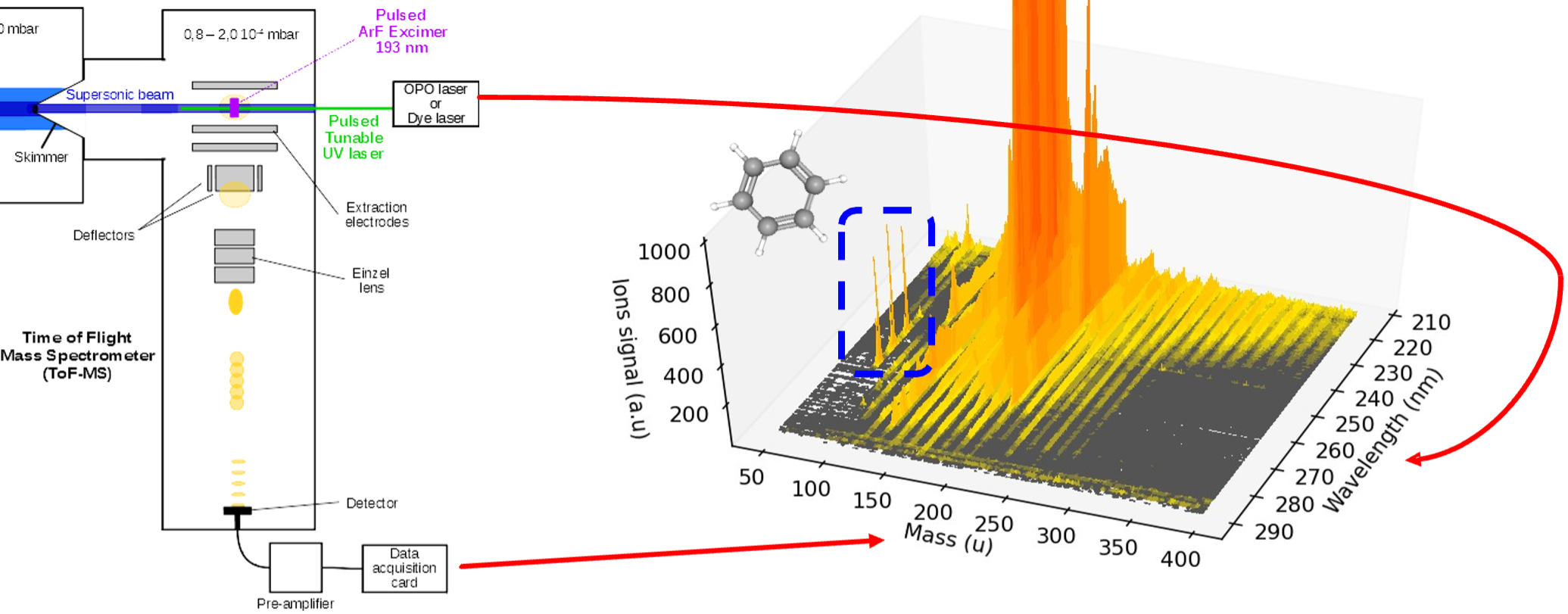Polycyclic aromatic hydrocarbons, commonly called PAHs for Polycyclic Aromatic Hydrocarbons, form a very large family of molecular species. These species are composed of carbon and hydrogen and have a polycyclic structure (with at least two aromatic rings). These molecular systems and their derivatives are expected to contain from a few % to several tens of % of the carbon in galaxies, and are hypothesized to carry several spectral signatures in absorption and emission detected with ground-based and on-board telescopes. These systems form an important component of interstellar matter, between small molecules and dust grains. Indeed, their expected size distribution ranges from a few tens to a few hundred carbon atoms. For these species, the spectral signatures through electronic transitions in the UV-visible range are poorly known. Indeed, the diversity and size range make their measurement in the laboratory very difficult under conditions similar to those prevailing in the interstellar medium (up to a few tens of K and very low density).
The Nanograins set up comprises a low-pressure combustion chamber coupled to a time-of-flight mass spectrometer. Thanks to the formation of a supersonic flow extracted from the flame, the objective is to measure the UV-visible absorption spectra of the cold molecular species produced under different flame conditions. Different laser spectroscopy methods are implemented, all adapted to the measurement of neutral species. The studies made it possible to identify a good number of species produced (more than 80 benzene and PAH derivatives), and above all to obtain new spectra as part of a recent (Joffrey Fréreux’s) thesis. These results made it possible to formulate a new hypothesis regarding the nature of the carriers of the giant absorption detected at 217 nm, a band measured on numerous lines of sight since the 1960s and carried by species present in the interstellar medium, but not elucidated to date. Work continues, with the integration of new types of vacuum burner to expand the diversity of species produced.

Contacts:
Emmanuel Dartois
Thomas Pino